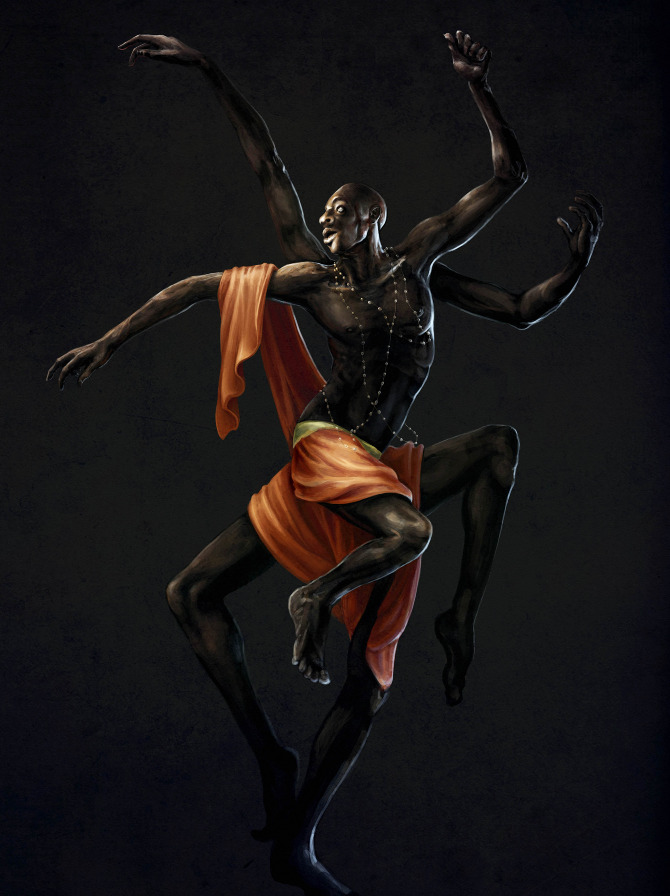
Anansi, the spider, is a West African God of stories and wisdom. While his origins can be traced back to the Ashanti people of present-day Ghana, the lore about him can also be found in the Southern United States and the Caribbean, having been carried over by enslaved Africans on their journey to the Americas. Besides Anansi, he goes by several different names, including Kwaku Ananse and Anansy. In the English speaking countries where his memory resides, he is affectionately dubbed, “Aunt Nancy.”
Anansi is a spider, but he often acts and appears as a man, or a man with spider-like qualities, such as multiple legs. He is associated more than anything with stories, as he cleverly managed to attain ownership of all the stories in the world as a young god. He is even the namesake of the Ashanti tradition of orally passing down fables: what they call Anansesem, or “spider tales.”

Some of the most well-preserved stories of Anansesem have survived in Jamaica, where the highest concentration of Ashanti Africans were enslaved. One of these stories depicts how Anansi, after angering death by stealing his food, managed to save himself and his family by having them all cling to the beams of his ceiling, as death was unable to climb. This was an explanation to many West Africans as to why spiders make so many webs in their rafters: Anansi was still trying to escape death. The Jamaican version even comes with its own proverb: “If yuh cyaan ketch Kwaku, yuh ketch him shut.” It’s a reminder to be thankful for what you have, as it was Anansi’s greed that got him into trouble in the first place.

The most important story, perhaps, is Anansi’s dispersal of wisdom. While Anansi was already very clever, he had the idea to hoard all the world’s wisdom in a large pot and keep it in a safe place. Even though the pot had been sealed, Anansi still worried that it wasn’t secure enough. So one day he took the pot in secret to a thorny tree with the intention of hiding the pot among the tallest branches. The pot was too big for Anansi to carry in his arms, so he tied it in front of him and proceeded to climb. Like this, the pot was in the way and Anansi kept sliding down the tree, growing more and more frustrated with each failed attempt.
Now on that particular day, Anansi’s young son Ntikuma had followed the spider god to the tree, unbeknownst to his father. He watched as Anansi struggled to climb the tree and couldn’t help but laugh.
“Why don’t you tie the pot to your back?” Ntikuma suggested, “Then you’d be able to grip the tree!”
Anansi was so annoyed by his own failure and the realization that his child was right that he accidently dropped the pot, spilling the wisdom everywhere. At that very moment a storm picked up and washed the wisdom into a river. The river took the wisdom out to sea, where it was spread all over the world, so that there is now a little for everyone.
While Anansi chased his son home in the rain, he was reconciled to the loss of wisdom, saying “What is the use of all that wisdom if a young child still needs to put you to right?”
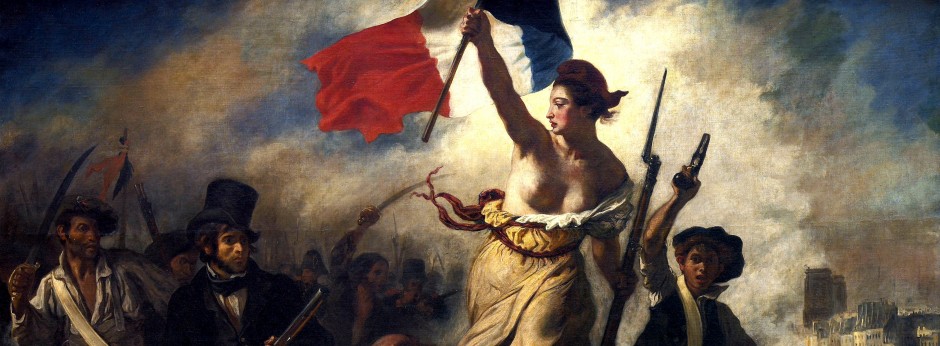
 Today we’re travelling to Slavic regions to learn about Baba Yaga, the old crone-like witch who lives deeps in the forests of Russia and Eastern Europe. Baba Yaga is not your boring, run of the mill witch who wears a pointy hat. Instead, she lives in a hut which walks around on long chicken legs with a mind of its own, surrounded by glowing red skulls. Baba Yaga also forgoes the traditional broom-method of transportation, and travels by sitting in a giant floating mortar, her bony legs tucked under chin, and rows herself through the forest with her giant pestle. Baba Yaga is known for being quite thin, despite her appetite for pretty young girls and handsome youths. She also has quite a reputable nose, which is said to scrape against the ceiling of her hut as she snores in her sleep. Baba Yaga is a mysterious character at the best of times. She has been portrayed with several different facets, and symbolizes aspects that range from an earth-mother goddess to death itself.
Today we’re travelling to Slavic regions to learn about Baba Yaga, the old crone-like witch who lives deeps in the forests of Russia and Eastern Europe. Baba Yaga is not your boring, run of the mill witch who wears a pointy hat. Instead, she lives in a hut which walks around on long chicken legs with a mind of its own, surrounded by glowing red skulls. Baba Yaga also forgoes the traditional broom-method of transportation, and travels by sitting in a giant floating mortar, her bony legs tucked under chin, and rows herself through the forest with her giant pestle. Baba Yaga is known for being quite thin, despite her appetite for pretty young girls and handsome youths. She also has quite a reputable nose, which is said to scrape against the ceiling of her hut as she snores in her sleep. Baba Yaga is a mysterious character at the best of times. She has been portrayed with several different facets, and symbolizes aspects that range from an earth-mother goddess to death itself.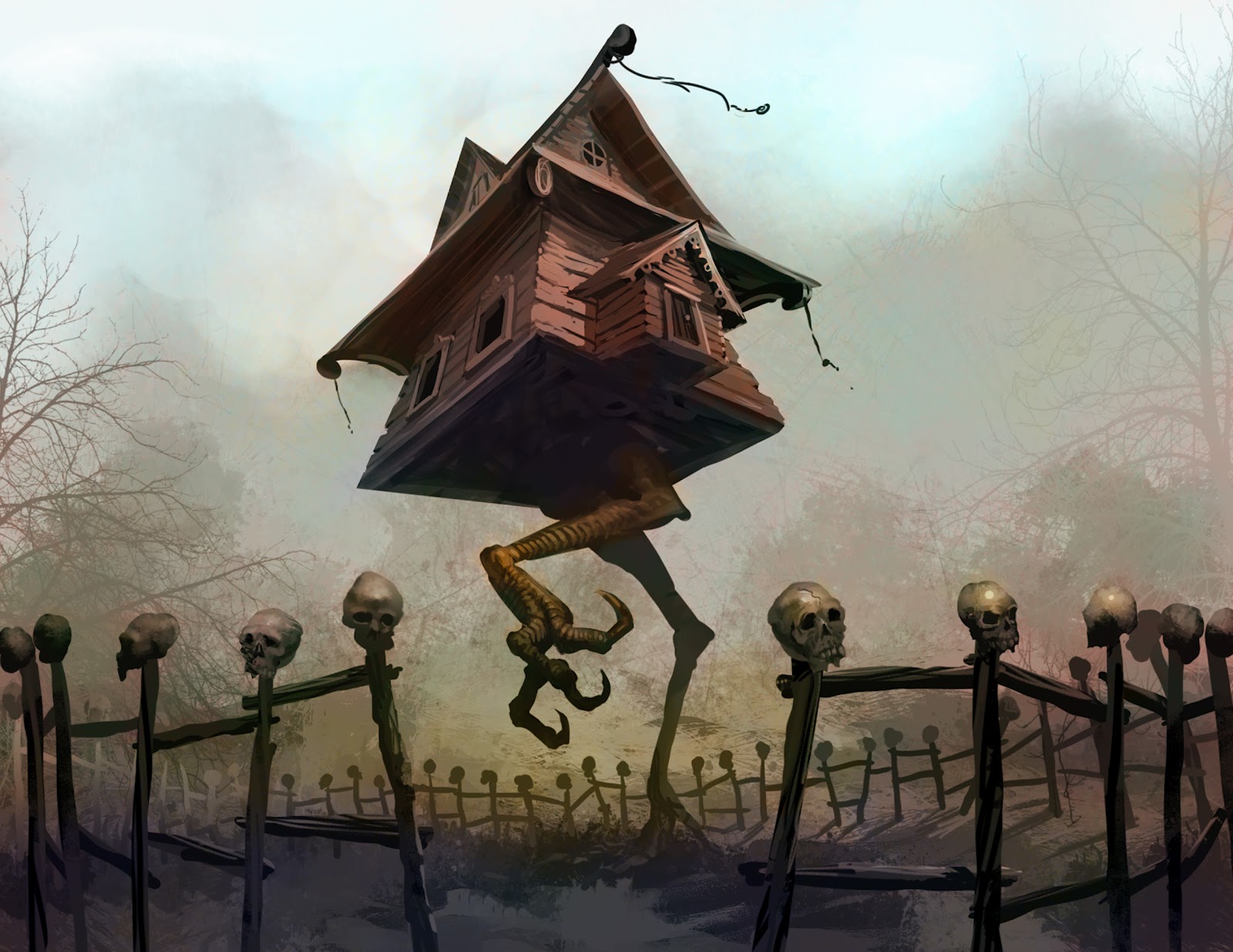 Natasha followed the step mother’s directions, soon coming to Baba Yaga’s hut in the forest. The creaky old house turned around on its chicken legs, seeming to stare at her before kneeling down and allowing Natasha to enter through it’s mouth-like door. Baba Yaga was waiting for her.
Natasha followed the step mother’s directions, soon coming to Baba Yaga’s hut in the forest. The creaky old house turned around on its chicken legs, seeming to stare at her before kneeling down and allowing Natasha to enter through it’s mouth-like door. Baba Yaga was waiting for her.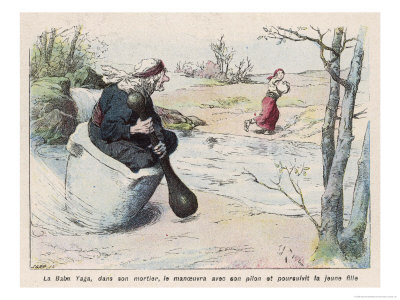
 What her new husband did not know, was that Scheherazade was a fantastic storyteller, and on the first night she spun Shahryar the most captivating tale he’d ever heard. But Scheherazade, who was clever, never finished the story that night. Instead she told Shahryar that she was tired, and promised to finish it the following night. Shahryar, who was too curious to go without hearing the end of the story, decided to post-pone his wife’s execution until the next day. That night, Scheherazade finished the story as promised, but then began another, leaving it similarly incomplete at night’s end and promising to finish it the next evening. And so it went, with Scheherazade beginning, but never finishing, a new story each night, for 1001 nights. These are the tales that now make up the pages of this great work.
What her new husband did not know, was that Scheherazade was a fantastic storyteller, and on the first night she spun Shahryar the most captivating tale he’d ever heard. But Scheherazade, who was clever, never finished the story that night. Instead she told Shahryar that she was tired, and promised to finish it the following night. Shahryar, who was too curious to go without hearing the end of the story, decided to post-pone his wife’s execution until the next day. That night, Scheherazade finished the story as promised, but then began another, leaving it similarly incomplete at night’s end and promising to finish it the next evening. And so it went, with Scheherazade beginning, but never finishing, a new story each night, for 1001 nights. These are the tales that now make up the pages of this great work. He manages to get into the cave and take much of the treasure for his poor family, but soon his richer brother grows jealous and goes back to the cave to steal some for himself. But by the time he goes to leave with his prize, he’s forgotten the password and gets stuck inside the cave, where he is discovered and killed by the bandits. Ali Baba eventually goes back and removes his brother’s body from the cave, which alerts the thieves to there being another person aware of their secret. Thus the search for Ali Baba begins, with each attempt made by the thieves to find and kill him being thwarted by Ali Baba’s clever slave, Morgiana–one of the toughest women you’ll ever read about.
He manages to get into the cave and take much of the treasure for his poor family, but soon his richer brother grows jealous and goes back to the cave to steal some for himself. But by the time he goes to leave with his prize, he’s forgotten the password and gets stuck inside the cave, where he is discovered and killed by the bandits. Ali Baba eventually goes back and removes his brother’s body from the cave, which alerts the thieves to there being another person aware of their secret. Thus the search for Ali Baba begins, with each attempt made by the thieves to find and kill him being thwarted by Ali Baba’s clever slave, Morgiana–one of the toughest women you’ll ever read about.
 It’s a story of an impoverished boy who is tricked into entering a dangerous cave by a malicious sorcerer. Aladdin ends up being trapped in the cave with the oil lamp he was sent to find. As he rubs his hands for warmth around the lamp, a powerful genie appears. With the help of the genie, Aladdin escapes the cave, marries the emperor’s daughter and creates his own, beautiful palace. Although the sorcerer eventually tricks the princess into giving the lamp to him, Aladdin is able to stop him by summoning a lesser genie from the ring the sorcerer had once given to him for protection. The lamp is returned to him, and Aladdin and his family are able to live happily ever after.
It’s a story of an impoverished boy who is tricked into entering a dangerous cave by a malicious sorcerer. Aladdin ends up being trapped in the cave with the oil lamp he was sent to find. As he rubs his hands for warmth around the lamp, a powerful genie appears. With the help of the genie, Aladdin escapes the cave, marries the emperor’s daughter and creates his own, beautiful palace. Although the sorcerer eventually tricks the princess into giving the lamp to him, Aladdin is able to stop him by summoning a lesser genie from the ring the sorcerer had once given to him for protection. The lamp is returned to him, and Aladdin and his family are able to live happily ever after.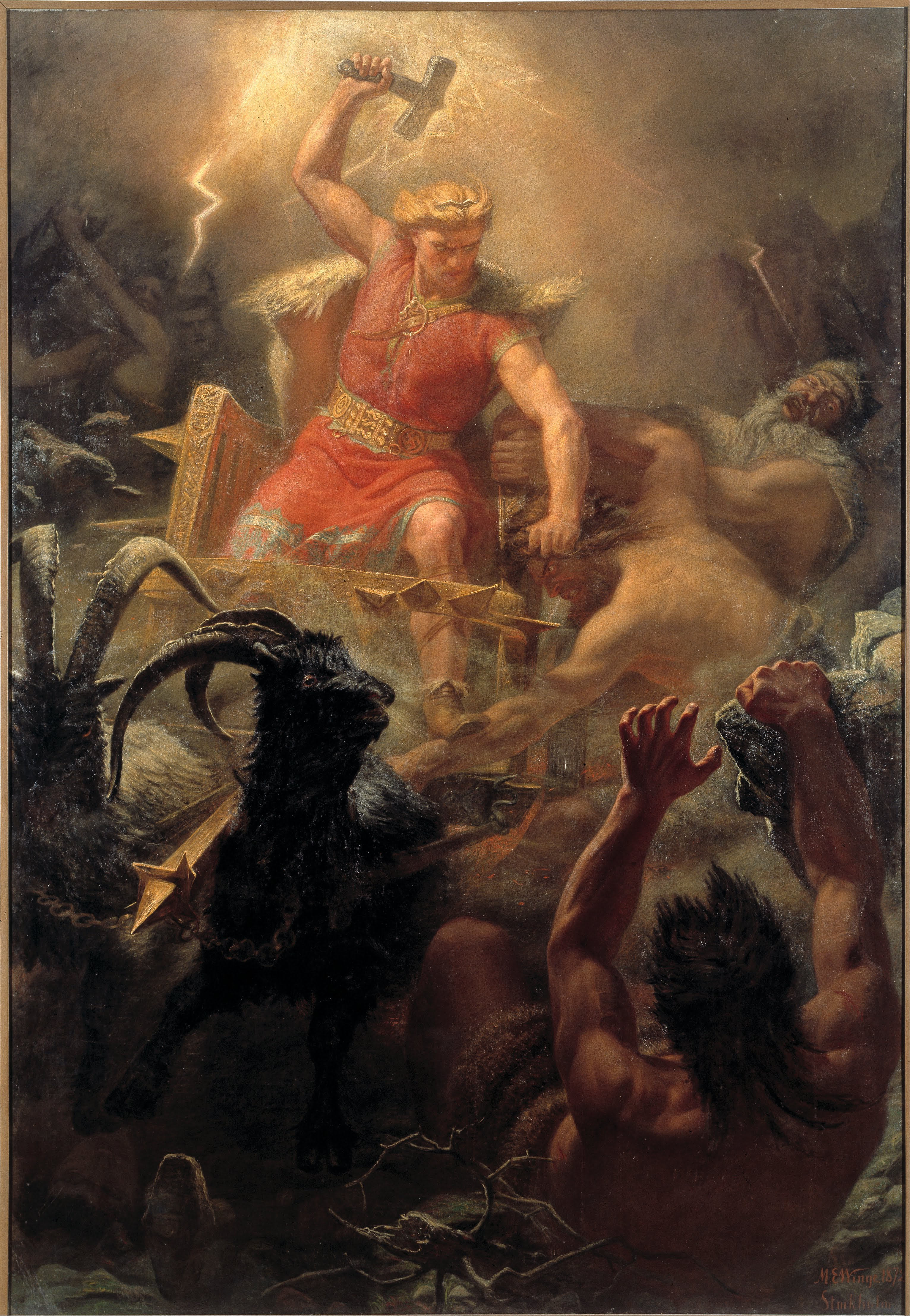

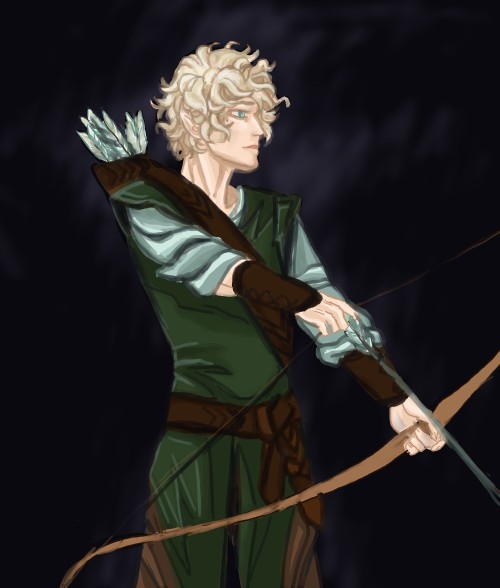



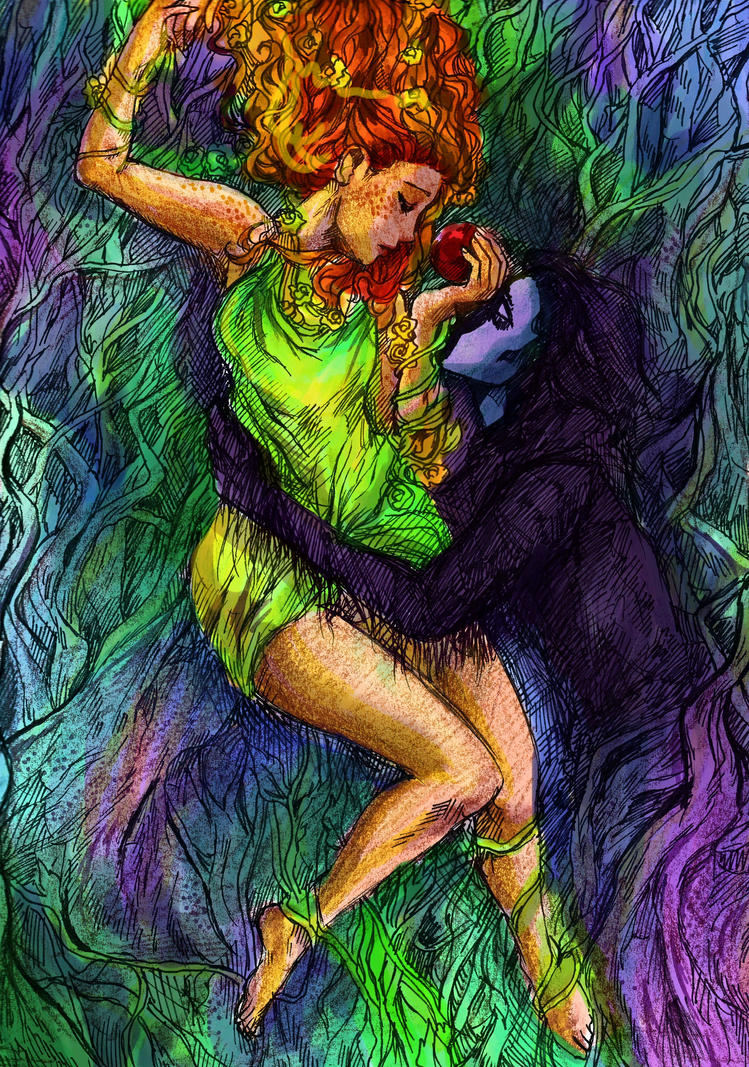
 who is by far the most stylin’ spirit of the dead (As you can see in the picture to the right). Possibly the most infamously famous God of the Voodou Pantheon, he is about one step down from Bondye, and commands the Guede (death and fertility) family of the Loa. He usually appears as a tall, skinny man in a black suit, shiny top hat,and a dinner jacket, with a white, skull-like face and cotton plugs in his nose (as if he’s dressed to be buried in a traditional Haitian funeral). I think he actually looks a bit like a sassy Wilson… except more dead, I guess. Baron-samedi is noted for obscenity and debauchery, and has a particular fondness for tobacco and rum spiked with hot peppers. He’s constantly making filthy jokes to the spirits in the realm he resides in. Despite this, the Baron is a god you’ll want to pray to, especially if you ever find yourself caught up in a nasty hex. As long as Baron-samedi refuses to dig your grave, the hex cannot kill you (#ProTip).
who is by far the most stylin’ spirit of the dead (As you can see in the picture to the right). Possibly the most infamously famous God of the Voodou Pantheon, he is about one step down from Bondye, and commands the Guede (death and fertility) family of the Loa. He usually appears as a tall, skinny man in a black suit, shiny top hat,and a dinner jacket, with a white, skull-like face and cotton plugs in his nose (as if he’s dressed to be buried in a traditional Haitian funeral). I think he actually looks a bit like a sassy Wilson… except more dead, I guess. Baron-samedi is noted for obscenity and debauchery, and has a particular fondness for tobacco and rum spiked with hot peppers. He’s constantly making filthy jokes to the spirits in the realm he resides in. Despite this, the Baron is a god you’ll want to pray to, especially if you ever find yourself caught up in a nasty hex. As long as Baron-samedi refuses to dig your grave, the hex cannot kill you (#ProTip).